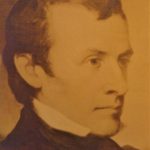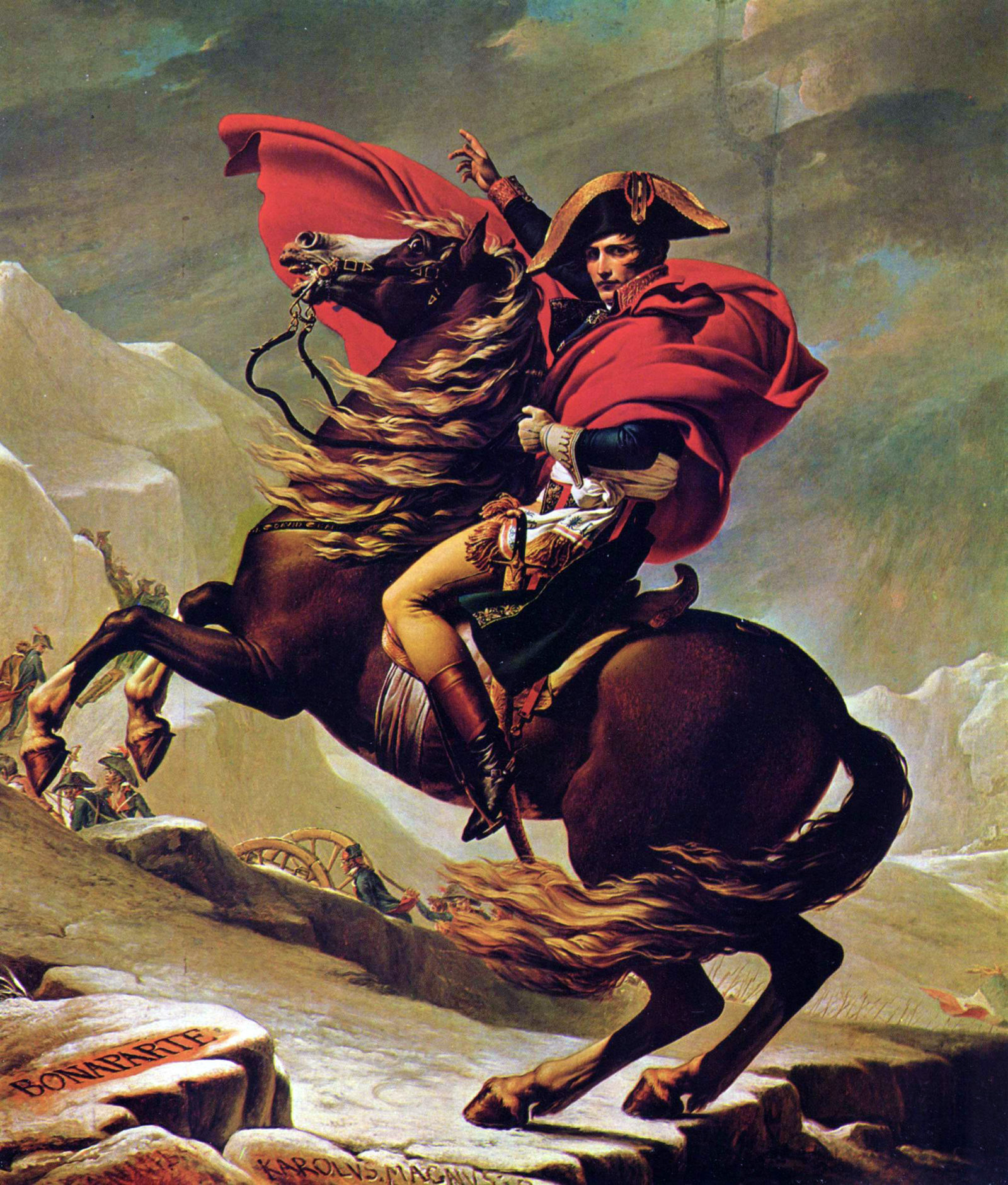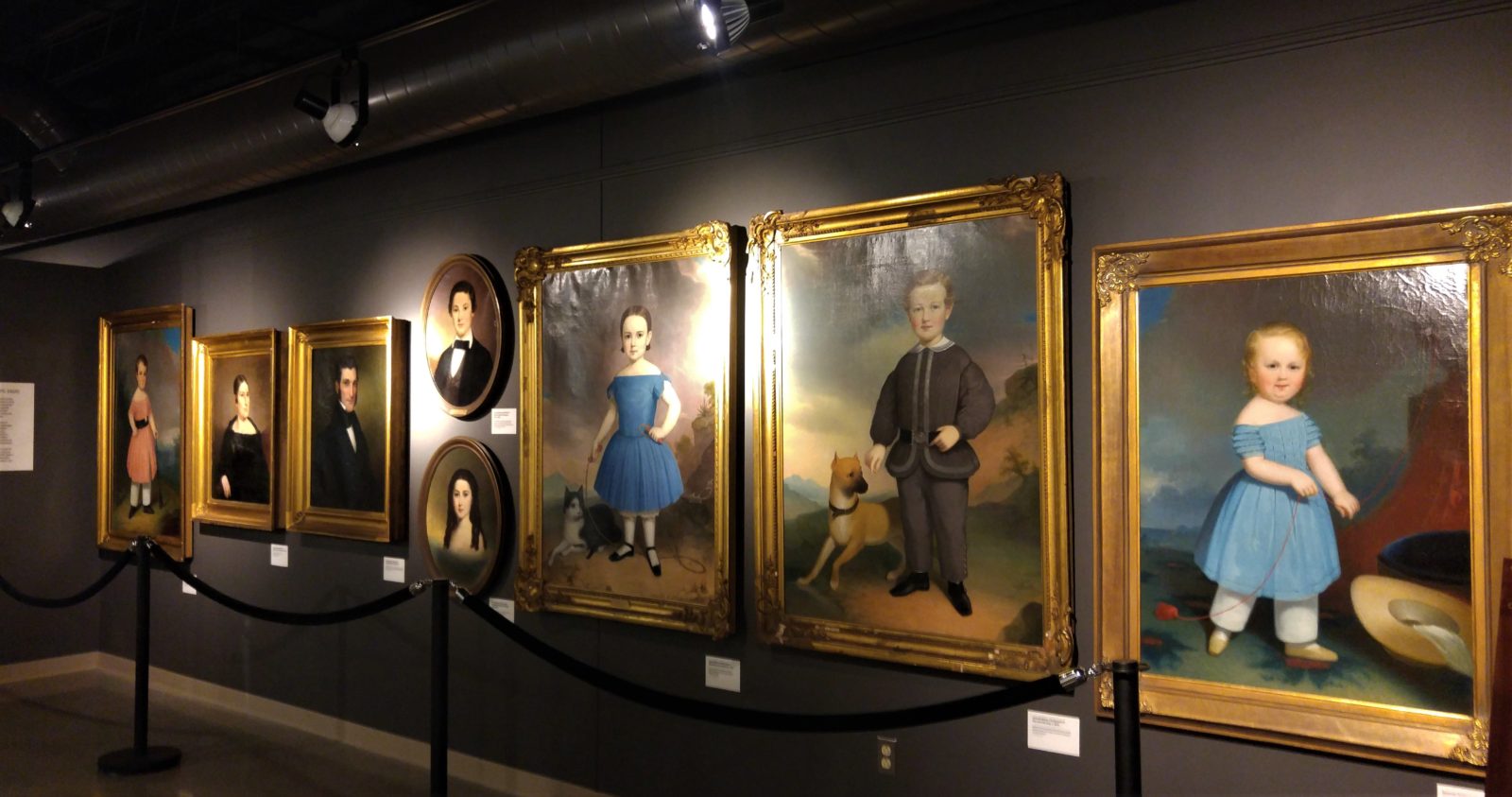Long before the birth of New Hope’s famous art colony, painter Samuel Moon led the way.
Size can matter in the art world. Daughter Genevieve drew notice in her college years for a 3-foot by 6-foot Quebec City street scene she oiled after a visit. Samuel Moon got his professional life started in a similar way. He set out to copy a French masterpiece, Jacques-Louis David’s “Napoleon Crossing the Alps” in the possession of Napoleon’s older brother Samuel Bonaparte living in exile in Bordentown, N.J. Sam’s version of the celebrated painting was not a carry-home oil on canvas. Rather it was fully 6 feet tall and 4 feet wide. Unveiled to the public in Doylestown in 1827 in the days before photography, it astonished experts for how close it was to David’s 1805 masterpiece.

Sam had just moved to New Hope in hopes of earning a living from art at age 22. It was a calling from his inner soul as a child born in 1805 to a devout Quaker family. His boyhood pursuits were exploring woods and fishing along Chester County’s Brandywine Creek. The quietude and beauty moved him to begin sketching scenes around him. He became good at it, so good that he started drawing life-like images of congregants at Quaker meetings in Downingtown. He composed them on the high backs of meetinghouse pews. The illustrations were so true-to-life they were preserved rather than washed away. Moon also painted ornamental designs on furniture in his dad’s cabinetmaker shop, Along the way he got to know artists enrolled at the prestigious Philadelphia Academy of Fine Arts.
The attention young Moon earned for his amateur works convinced him to become a self-taught, professional artist. In 1827, he moved to the village of New Hope on the Delaware River where he quickly established his mastery of oil painting. His knock-off of “Napoleon Crossing the Alps” drew wide fanfare.

It no doubt helped that Joseph Bonaparte, 52, frequently visited Bucks from nearby Bordentown. Citizens here also had warm feelings toward France for helping the Colonies win the American Revolution within the memory of many. But it was Moon’s technique of handling oil colors with precision to replicate known masterpieces that dazzled experts. Noteworthy was his replication of Giovanni Guercino’s “Resurrection of Lazarus” at 8 feet high and 12 feet long.
Moon continued to impress as a portrait artist, hired by wealthy patrons. His reputation grew just as New Hope began to fade as a regional industrial power. The town was the first in Bucks to house numerous industries as far back as 1712. Flour, linseed oil, fulling, iron rolling, grist and lumber mills plus an iron foundry produced great wealth. In 1830 the Bucks County Intelligencer pronounced the village as “the only manufacturing town” in the county just as Bristol was about to supercede it.

In this setting, Sam’s art business percolated with contracts for religious scenes, landscapes, full-sized and miniature portraits plus copies of old masterworks. With burgeoning success, he relocated up the Delaware River to bustling Easton where there were no portrait artists. There he founded a studio and gallery in the Insurance Building on Centre Square. Marrying a local woman, he fathered eight children while earning commissions as a portraitist for wealthy families in Easton and Philadelphia plus Bucks and Chester counties. He continued to produce many Moon paintings for 30 years until his death in 1860 at age 55.
There’s a haunting back story to his vivid works on display at the Sigal Museum in Easton. A sweet, colorful portrait of Minnie Bercaw shows her with a jump rope and cat lying at her feet. She died just months later from scarlet fever at age 6. Likewise is his painting of newlywed Anne Marie Detwiller who passed away at age 22, four months after sitting for her portrait. Moon’s painting of Anne’s brother James shows him as first lieutenant of a Pennsylvania militia company before he contracted yellow fever and died in 1861 at age 20.
Easton has embraced and memorialized Samuel Moon. But a portion of his legacy is all but forgotten as New Hope’s first famous artist. Seventy-seven years after he left town, the New Hope Art Colony painted its way to renown in 1907 and re-branded New Hope as an internationally-known haven of the arts.
Sources include “Place Names in Bucks County Pennsylvania” by George MacReynolds published in 1942 and “Historical Treasures: Samuel Moon Paintings” by the Easton Express-Times newspaper staff published on April 17, 2011. To view Moon’s paintings, visit the Sigal Museum which is next door to the Crayola Factory in Easton; information at https://sigalmuseum.org/
Carl LaVO, a retired Courier Times editor, will appear on Saturday (Sept. 9) from 2-4 p.m. at the 3rd Annual Authors Expo at the Free Library of Northampton Township, 25 Upper Holland Road, Richboro. Carl is the author of five hardcover books including the newly published coffee table book, “Bucks County Adventures.” He can be reached at carllavo@msn.com or through his website, www.buckscountyadventures.org
